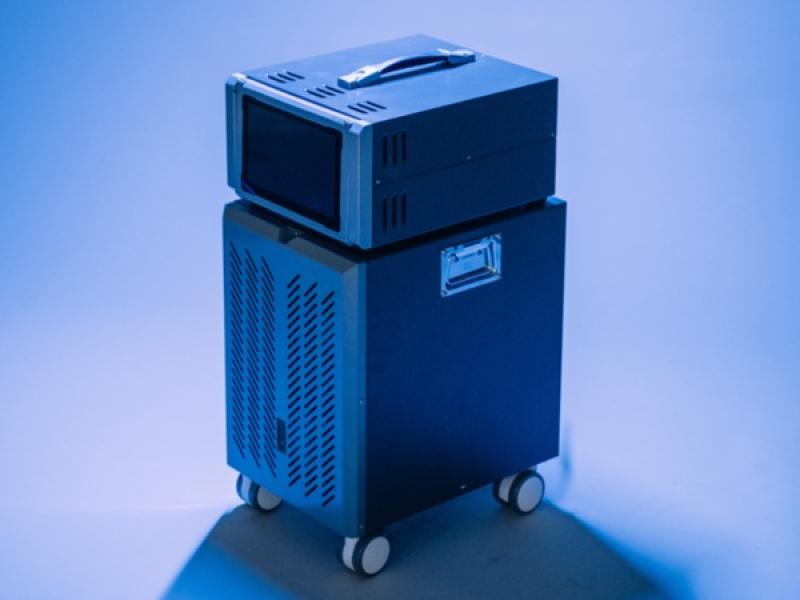
Starting with field trials in the fall, Burnaby, B.C.-based Tersa Earth Innovations is hoping to extract the leftover minerals in mining waste streams that it states are worth an estimated $20 billion in North America.
The company, which was developed out of the University of British Columbia in 2021, uses a patented process by which microorganisms generate electricity to clean the acid rock drainage (ARD) from pools of mining waste, while also recovering the leftover minerals.
“For us, the tailings are the new type of ore,” Vikram Yadav, Tersa Earth’s founder, told SustainableBiz.
“We pull out all the useful metals, we condition the water, and so just like mining produces rock, we produce water as a by-product and this water is fit for discharge.”
How Tersa's process works
Tersa's process applies technology called microbial fuel cells, which uses microorganisms to generate electricity. The electricity is used in a process called electrowinning, which recovers the metals from a solution by passing an electric current through it.
Electrowinning is used on mine tailings, which are the waste material created once the sought-after minerals and elements are removed from ore. ARD can contain arsenic, selenium, mercury, lead and other toxic elements.
Traditional water treatment in the mining industry involves the use of lime. Tersa Earth’s technology also avoids that, saving on both costs and emissions.
Tersa Earth’s origins
The company estimates that without improved mining remediation technology, over 75 trillion litres of ARD will be produced globally by 2040.
According to Yadav, Tersa Earth isn’t the first company to have thought of microbial fuel cells to clean up tailings ponds. What sets it apart, however, is that its technology is continuous, compared to a batch process.
“(For) the architecture that we've designed our fuel cells, we can actually stack them. So imagine you have a stack of many fuel cells, all of which you have liquids going through, you very quickly start processing a large volume of fluids,” he explained. “And that is the uniqueness of our technology.”
During development, he said Tersa Earth went through around 50 fuel cell unit prototypes.
The company employs 15 people, with three co-op students across two labs in Burnaby, which is a “lab-to-pilot scale,” as Yadav puts it. Tersa is considering a future commercial facility to aid in deployment to mine sites, although those plans are in early discussion stages.
Full scale commercialization is anticipated by Q1 or Q2 2025.
Tersa Earth’s field trials
Tersa Earth is currently raising funds to help its planned field trials.
Yadav did not reveal specifics on who is involved in the field trials, only that they are Canadian sites and will run into 2024.
Yadav explained the fuel cell systems would be relatively quick to deploy at mining sites, only taking about a week. The deliberation comes from the specifics involved in planning for the site itself.
“One of the big challenges with the field trial is that you need to have some understanding of the geography, the investigations, what's going on (in) the mine site. And so there is some field ops planning that has to take place," he said. "Usually that's a function of how much information the site is giving us because we can design these things. So that's why we say it will take us a few months.”
For the trials, the company is planning to increase the size of its base fuel units by 10-times to process a much higher volume of mining waste to an estimated capacity of 1,500 to 2,000 litres. Yadav states the system would be transported in a 20-foot shipping container.
Tersa Earth is also in conversation with many figures in the mining industry on how best to deploy its technology. Yadav explained it will likely involve a combination of centralized manufacturing and secondary assembly.
“In terms of the field trials, we are targeting sites in Canada, and the reason is because we can actually benefit from a lot of working in close proximity with the Canadian government. There's a lot of regulatory as well as grant funding support that they can also benefit from, and there are excellent candidates in Ontario,” Yadav said.
“Sudbury, for example, actually is a very good candidate for what we're trying to do.”
Beyond its field trials, however, Tersa Earth isn’t restricting itself by geography. Yadav also isn’t ruling out going public in the future.
“All options are on the table.”










